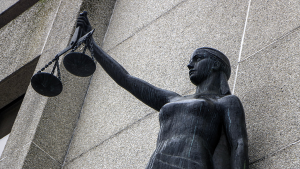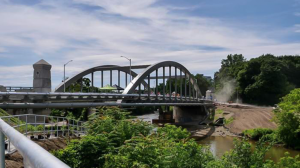A commission’s findings into the collapse of the de la Concorde overpass proves that the strength of infrastructure goes far beyond the concrete and steel which makes it possible, explain industry experts.
Concorde Inquiry
People and organizations failed to assume their responsibilities during construction, says commission chair
A commission’s findings into the collapse of the de la Concorde overpass proves that the strength of infrastructure goes far beyond the concrete and steel which makes it possible, explain industry experts.
“We take infrastructure for granted and there is a complicated mix of a lot of players to make a project, like a bridge, happen,” said John Gamble, Consulting Engineers of Ontario president.
“In projects like this, we are only as successful as our weakest link in the chain.”
Improper rebar detailing during the design of the de la Concorde’s abutments; improper rebar installation at the time of construction and use of a low quality concrete, which proved to be inadequate to withstand freeze-thaw cycles in the presence of road salts, all created a foundation for the bridge’s collapse on Sept. 30, 2006, the commission stated.
However, the sudden collapse of the nearly 40-year-old bridge, which claimed five lives, cannot be solely attributed to these three factors alone, stated Pierre Marc Johnson, commission chairman.
“The tragedy of the de la Concorde overpass stems from a combination of circumstances that include physical causes, but that also have one thing in common: the behaviour of people and organizations that failed to assume their responsibilities during construction, or that did not do so properly during the bridge’s service life,” explained Johnson.
The commission tabled 17 recommendations covering the areas of accountability clarification, national bridge rehabilitation, Quebec transportation ministry improvements, design, standards and construction governance upgrades.
“These components are complementary,” said Johnson.
“The rehabilitation of Quebec’s bridges will require more than massive investments.”
After the commission report was released, the Quebec government announced $11.6 billion in funding, over the next four years, for bridge and overpass maintenance.
A new bridge and overpass agency responsible for maintenance of the structures, will also be created.
“Overall, as an industry, how do we react to a report like this?” said Jeff Morrison, Canadian Construction Association government relations and public affairs director. “We need to strive for professionalism and quality of work; it is unfortunate something like this has to happen for us to take a closer look.”
Both the private and public arms involved in the building and maintenance of the bridge are to blame, said Johnson.
“The Commission clearly demonstrated the regrettably inadequate role played by some companies and some of the individuals involved in the construction and supervision of the de la Concorde overpass nearly 40 years ago,” Johnson stated.
“While the Commission reproaches and deplores certain shortcomings, it has chosen to blame the ministere des Transports du Quebec (MTQ) for its inadequate management of structures.”
Dr. Roger Dorton, Canadian Society for Civil Engineering member, has specialized in bridge design, rehabilitation and code development for 50 years. He was impressed by the quality of the report, calling it an outstanding example of what to do in an inquiry.
“The way they carried out experimental procedures with modeling and took the time to try and find everyone involved, over 30 years after fact, are all factors that made it a high quality report,” said Dorton. “When there is a failure, everyone looks for one cause, when in fact it is several weaknesses coming together.”
For more on the Concorde Inquiry visit www.journalofcommerce.com and follow the Special Report links.











Recent Comments
comments for this post are closed